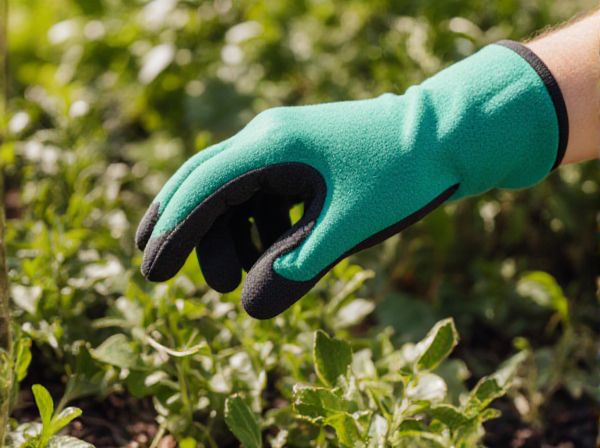
Swale vs Berm Illustration
Swales are shallow, water-harvesting ditches designed to slow and capture rainwater, allowing it to infiltrate the soil and support plant growth. Berms are raised barriers of soil created alongside swales to hold water and prevent erosion, often planted with vegetation to stabilize the structure. Both features work synergistically in permaculture landscapes to conserve water and enhance soil fertility.
Table of Comparison
| Feature | Swale | Berm |
|---|---|---|
| Definition | Contoured trench designed to capture and slow water runoff | Raised mound of earth built parallel to swales or slopes |
| Primary Function | Water retention and infiltration into soil | Directs water flow and prevents erosion |
| Location | Excavated on contour lines on slopes | Constructed downhill side of swales or terraces |
| Water Management | Slows runoff, maximizes groundwater recharge | Diverts and redistributes surface water |
| Soil Impact | Promotes soil moisture and organic matter buildup | Prevents soil erosion and supports plant root systems |
| Vegetation Support | Ideal for fruit trees and moisture-loving plants | Supports drought-tolerant and stabilizing vegetation |
| Maintenance | Requires periodic clearing of sediment and debris | Needs reshaping after heavy rains to maintain structure |
| Permaculture Role | Key element for sustainable water harvesting | Supports landscape stability and water flow control |
Understanding Swales and Berms in Permaculture
Swales are contour-following, water-harvesting ditches designed to capture and infiltrate rainwater into the soil, promoting groundwater recharge and preventing erosion in permaculture landscapes. Berms, on the other hand, are raised mounds of earth positioned downslope of swales or other features to direct water flow, create microclimates, and support plant growth by retaining moisture. Together, swales and berms form an integrated earthworks system that maximizes water retention, enhances soil health, and supports sustainable, regenerative land management.
Key Differences Between Swales and Berms
Swales are contour-aligned trenches designed to capture and infiltrate water into the soil, promoting groundwater recharge and preventing erosion. Berms are raised mounds or ridges of earth constructed parallel or adjacent to swales, serving as barriers to direct water flow and support vegetation growth. The key difference lies in their function: swales primarily manage water infiltration, while berms focus on water diversion and structural support in permaculture design.
Functions and Benefits of Swales
Swales are water-harvesting earthworks designed to capture and infiltrate runoff, reducing soil erosion and increasing groundwater recharge. They function by slowing down surface water flow, allowing it to spread evenly and soak into the soil, which supports plant growth and enhances soil moisture levels. Swales also promote biodiversity by creating microhabitats and improving landscape resilience in permaculture systems.
Functions and Benefits of Berms
Berms in permaculture serve as raised barriers that slow water runoff, allowing increased infiltration and reducing soil erosion. They create microclimates by capturing heat and moisture, promoting diverse plant growth and improving soil fertility. By directing water flow and supporting vegetation, berms enhance landscape stability and contribute to sustainable water management.
Site Assessments: When to Use Swales vs Berms
Swales are optimal for managing water flow on sloped terrain by capturing and infiltrating runoff, preventing erosion, and replenishing groundwater. Berms are best employed on flatter sites to create raised planting areas that enhance soil moisture retention and improve microclimates for diverse crops. Site assessments should consider topography, soil type, and water flow patterns to determine whether swales or berms offer the most effective landscape stabilization and water management solution.
Water Management Strategies: Swales vs Berms
Swales are shallow, broad channels designed on contour to capture and infiltrate rainwater, reducing runoff and promoting groundwater recharge. Berms are raised mounds of earth placed downslope of swales or garden beds to slow water flow and direct moisture into the soil. Both swales and berms function synergistically in permaculture water management by enhancing soil hydration and preventing erosion.
Soil Health and Erosion Control Comparison
Swales are landscape features that capture and infiltrate water, promoting soil moisture retention and reducing erosion by slowing runoff, which enhances soil health by supporting microbial activity and nutrient cycling. Berms, raised soil mounds adjacent to swales, stabilize the landscape by directing water flow and preventing soil displacement, effectively controlling erosion while creating diverse microhabitats for plants. Together, swales and berms improve soil structure, prevent nutrient loss, and increase land resilience against heavy rainfall in permaculture designs.
Designing with Swales: Best Practices
Designing with swales involves strategically placing these water-harvesting earthworks on contour lines to slow runoff and enhance groundwater infiltration. Best practices include ensuring proper sizing based on watershed area, incorporating overflow outlets to manage heavy rain, and planting deep-rooted vegetation on berms for soil stabilization and nutrient uptake. Regular maintenance, such as sediment removal and berm reinforcement, maximizes the swale's effectiveness in permaculture systems.
Incorporating Berms into Permaculture Systems
Berms play a crucial role in permaculture by capturing and slowing runoff water, enhancing soil moisture retention along contour lines. Incorporating berms into permaculture designs supports plant growth by creating microclimates and preventing erosion, complementing swales that primarily focus on water infiltration. Effective use of berms increases landscape resilience and promotes sustainable water management within diverse permaculture systems.
Choosing the Right Solution for Your Garden
Swales are designed to capture and slowly infiltrate water into the soil, making them ideal for gardens with slopes and heavy rainfall, while berms create raised planting areas that enhance drainage and prevent erosion on flatter or gently sloping land. Soil type, garden topography, and water management goals determine whether a swale or berm best suits your permaculture design. Prioritizing water retention in arid zones favors swales, whereas berms support raised bed cultures and can improve microclimates in diverse garden ecosystems.
Swale vs Berm Infographic

 gardendif.com
gardendif.com